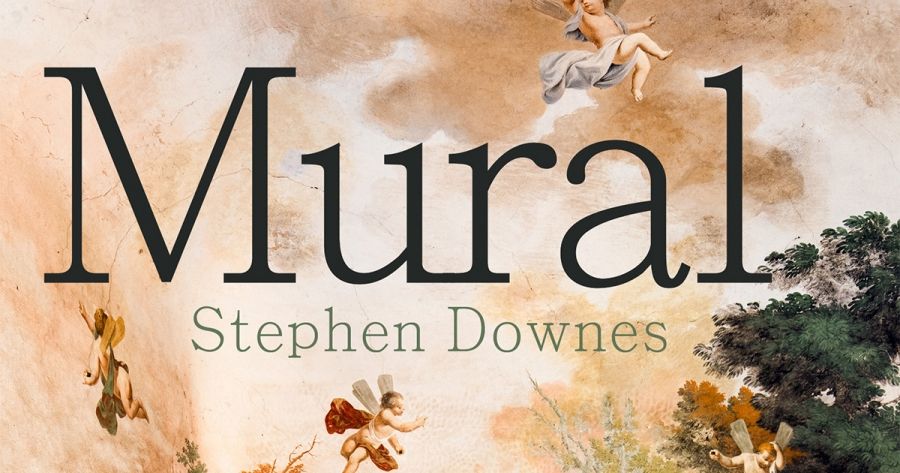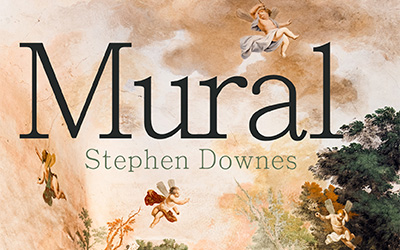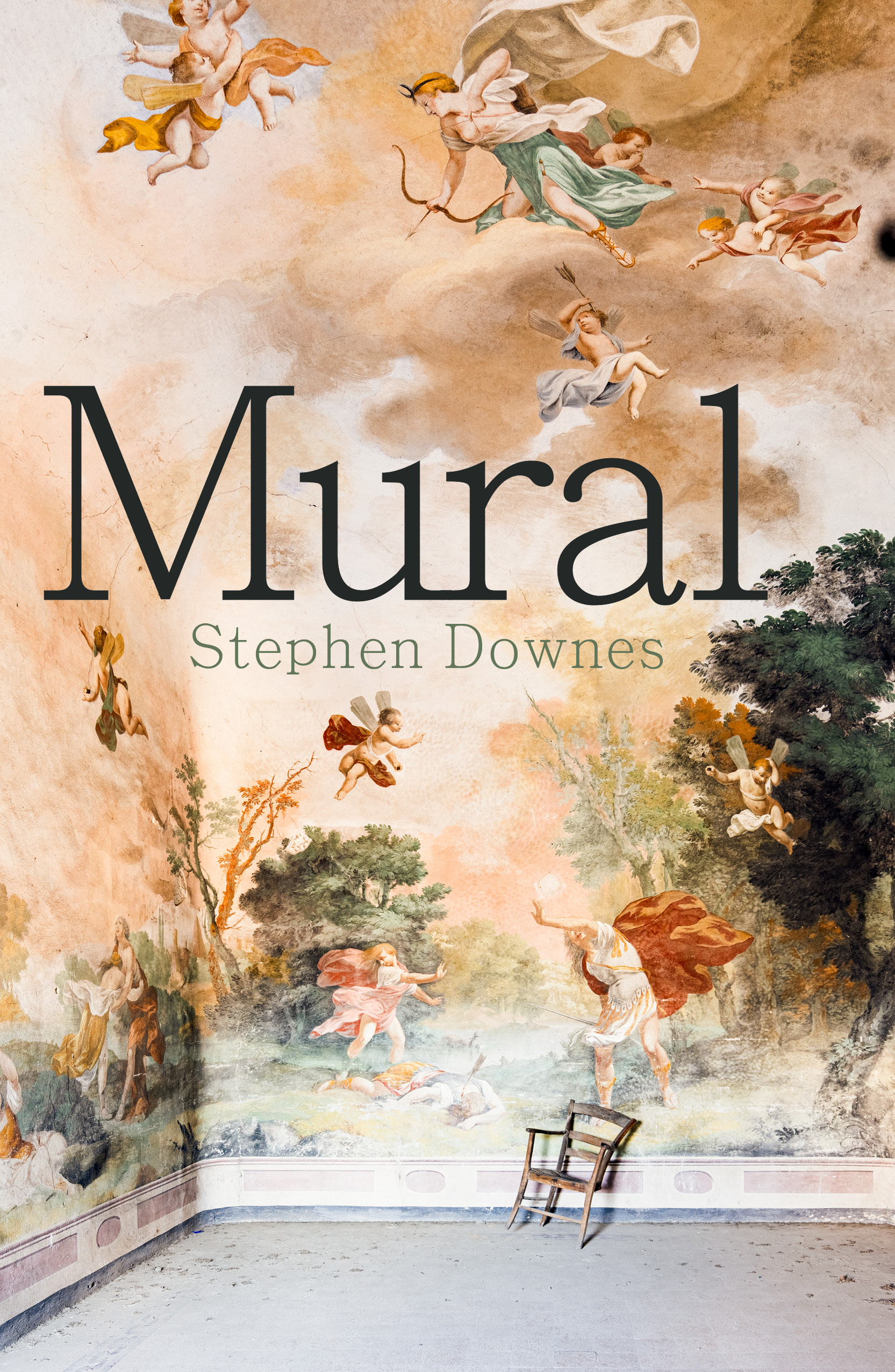
- Free Article: No
- Contents Category: Fiction
- Review Article: Yes
- Article Title: Beguiling rabbit holes
- Article Subtitle: Forgoing conventional plot
- Online Only: No
- Custom Highlight Text:
When you are languishing in a prison cell, you can become intensely creative. John Bunyan, Jean Genet, and Miguel de Cervantes used their time to write classic works of literature. On the eve of his hanging, Louis D’Ascoyne Mazzini wrote a memoir to explain why he set out to murder eight people. Louis is fictional, the anti-hero of the film Kind Hearts and Coronets (1949).
- Featured Image (400px * 250px):

- Alt Tag (Featured Image): Jane Sullivan reviews ‘Mural’ by Stephen Downes
- Book 1 Title: Mural
- Book 1 Biblio: Transit Lounge, $32.99 hb, 200 pp
- Book 1 Cover Small (400 x 600):

- Book 1 Cover (800 x 1200):

- Book 1 Readings Link: https://www.readings.com.au/product/9781923023185/mural--stephen-downes--2024--9781923023185#rac:jokjjzr6ly9m
D has been encouraged by his shrink, Dr Reynolds, to write down his thoughts. He is happy to do so: as he explains to Dr R and the reader, the eccentric mind is chaotic and sometimes malicious, so a certain calm must be brought to the thoughts of ‘people like me’. This calm is produced by following an obsession. D has pursued malice; two other men who fascinate him, the sexologist Havelock Ellis and the muralist Mervyn Napier Waller, have pursued different passions that may have saved them from doing harm.
As we follow D’s roaming thoughts, we learn about Ellis and Waller and a great deal else, from marbles to Methodism, with many a digression and tales within tales. Gradually, we discover that these are all oblique or not-so-oblique references to D’s life and experiences. But how reliable a narrator is D? He is so fond of teasing Dr R that we wonder if all his work on the laptop is one big tease, a device to keep the real D well hidden.
Downes’s career as a journalist (we once worked together in the feature writers’ room at The Age) included a long stint as a much-feared restaurant critic, which gained him a reputation as an exacting if benign curmudgeon. He has gone on to write non-fiction books, award-winning short stories, and an earlier novel, The Hands of Pianists (2020), which was shortlisted for the 2022 Australian Prime Minister’s Literary Awards. I am familiar with his journalism, but it did nothing to prepare me for Mural.
Whether you enjoy Mural or not depends very much on whether you are willing to forgo the pleasures of a conventional plot in favour of a dip into many beguiling rabbit holes while you try to work out what brings the disparate elements together. Downes cites inspiration from W.G. Sebald and Thomas Bernhard, the latter known for his obsessive monologues and characters on the edge of unsanity. Indeed, Mural begins with a typically provocative Bernhard quote, claiming that all parents produce a child in order to kill it. Then there is D’s counter-argument that, to save themselves, children must kill their parents – sometimes literally, bashing in their skulls.
In the structure of the book, it is Sebald who is the strongest influence. Witness D’s way of starting stories without fully identifying the main character, for example, or using slightly blurry snapshots throughout the text. Sebald used these devices to create a mix of fact and fiction and an overall hypnotic effect, which Mural also sometimes achieves, though not so consistently.
But comparisons with Sebald’s work are unfair. Downes’s work has its own qualities and preoccupations. One of his themes is the repressed sexual urge. Havelock Ellis was plagued with lustful thoughts: he ejaculated spontaneously over a French volume on the lives of courtesans. The frustrations of a shy virginal young man led him to become a pioneering sexologist. The Australian mural artist Mervyn Napier Waller gets a similar treatment when D turns his male gaze to the nude nymphs in his murals and is convinced that Waller’s erotic interests lay behind all his work, nudes or no.
One extraordinary episode centres on a mural behind a pulpit in a Methodist church which terrified D as a child, and later leads to his pursuit of Waller. There are two photographs of this mural, which doesn’t seem the least bit frightening to me. But then, I am not D and I wasn’t brought up Methodist. The railings against the repressions of a religion seemingly designed to destroy all joy have an authentic ring that suggests something deeply autobiographical is going on here.
There are lots of funny, charming fairytale moments in Mural, such as the story about Dante Gabriel Rossetti’s pet wombat, or the folklore surrounding the ancient stones at Carnac, France’s answer to Stonehenge. Even at the most enchanting moments, something dark creeps in. The pet wombat dies, which reminds us of D’s childhood experiments destroying animals, the classic sign of a serial killer in the making. The Carnac stones are at the centre of a distressing story of obsession and madness.
So much darkness lurks in the background and occasionally comes to the fore that it is no surprise (although it comes on a bit too quickly for my liking) to find D’s chronicle ending in an explosion of chaos and madness from his outraged author’s ego.
For me the main attraction in Mural is D’s voice. He is a seductive narrator, even at his nastiest moments, consistently crafting a witty detachment and a dazzling display of fun facts that mask his underlying terror and aggression. Fortunately most of us won’t drive ourselves to his extremes. But even if we can’t sense the fear inspired by that innocuous mural behind the pulpit, or the clatter of a syringe in a basin, we all have our own personal horrors, and so we know something of what he is on about.


Comments powered by CComment